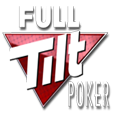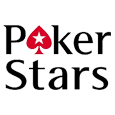Poker is played with a standard 52 card deck that contains 4 suits, Hearts, Spades, Diamonds and Clubs. Each suit contains 13 cards ranked as follows, highest to lowest. The letter/number to the right is usually used instead of the spelled out version in print. The Ace can be used as the high card or the low card (below the Two). Also, whenever you see one of the letter/number abbreviations for a card, it will often be followed by a small letter h for hearts, s for spades, d for diamonds or c for clubs. Ex: Ah is the Ace of hearts. If you see two letters/numbers designating cards followed by an s or st, it means suited. Ex: KQs or KQst is the King and Queen of the same suit.
| Ace | King | Queen | Jack | Ten | Nine | Eight | Seven | Six | Five | Four | Three | Two |
|---|---|---|---|---|---|---|---|---|---|---|---|---|
| A | K | Q | J | T | 9 | 8 | 7 | 6 | 5 | 4 | 3 | 2 |
Most games are played for the best, or highest, five card hand. There are a few games that split the pot between the highest hand and the lowest hand (see Omaha/8 section for more information) and a few games that are played for the lowest hand (which are not often spread and not discussed here). Here are the ranks of certain combinations, best to worst.
Royal Flush – A K Q J T all of the same suit.
Straight Flush – Five cards in a row all of the same suit. Ex: 9 8 7 6 5 or Q J T 9 8, all of the same suit. If two straight flushes are out, the one with the highest card wins.
Four of a Kind – All four cards of the same rank. Ex: K K K K or 8 8 8 8.
Full House- Three of one rank and two of another. Ex: Q Q Q 6 6 or 7 7 7 A A. The highest set of three wins if two full houses are against each other. In the example, the Q Q Q 6 6 would win.
Flush – Five cards of the same suit. If two flushes are present the flush with the highest card wins.
Straight – Five cards in order. Ex: T 9 8 7 6 or 5 4 3 2 A. If two are out the one with the highest card wins.
Three of a Kind – Three cards of the same rank. Often called trips or a set. Ex: 2 2 2.
Two Pair – Ex: K K 3 3 or J J T T. The highest pair wins if two are present.
Pair – Ex. AA or 77. The highest pair wins.
High Card – If no pair or better is present the highest card wins. If two players have the same high card, their next highest card, or kicker, is looked at until one has a higher kicker than the other.
Kickers are also used to break ties if two players have the same set, two pair or pair.
Poker is played either limit, pot-limit or no-limit. Here is a short definition of each.
Limit – Bets are limited to a set amount. In most games the first two rounds of betting have bets equal to the big blind and the last two rounds have bets equal to twice the big blind. So a 1/2 game would have a small blind of .50, a large blind of $1 (discussed below), two betting rounds of $1 and two rounds at $2. Each round the players may check if a bet has not been placed except for the first round in which they must either call the big blind or raise or fold. In all other rounds players may check or place an opening bet which is the limit for that round and each player behind the opening bet may call or raise the same bet amount. Many poker rooms will allow three raises per round and some will allow unlimited raising in the correct increments if the hand is heads-up.
Pot-Limit – Pot-limit games have a blind system just like the limit games but a raise may be up to the size of the pot. This system is often confusing for the beginning player as the person who raises can actually place enough money in the pot to call a prior bet and then raise up to the new amount of the pot. (An important note: Before placing any chips in the pot in a live game, state your intention to call or raise so there is no confusion to your intentions). An example of would be a pot size of $10 and a player bets $5 bringing the pot to $15. The next player may raise up to $20 by putting $25 in the pot. The first $5 is a call making the pot $20 and then a raise of the size of the pot.
No-Limit – No-Limit is played exactly like pot-limit with the exception that a player may bet any amount up to the amount they have on the table on any round of betting.
Here is some additional useful information.
| Outs | Turn & River | River |
|---|---|---|
| 15 | .85 – 1 | 2.1 – 1 |
| 14 | .95 – 1 | 2.3 – 1 |
| 13 | 1.1 – 1 | 2.5 – 1 |
| 12 | 1.2 – 1 | 2.8 – 1 |
| 11 | 1.4 – 1 | 3.2 – 1 |
| 10 | 1.6 – 1 | 3.6 – 1 |
| 9 | 1.9 – 1 | 4.1 – 1 |
| 8 | 2.2 – 1 | 4.8 – 1 |
| 7 | 2.6 – 1 | 5.6 – 1 |
| 6 | 3.2 – 1 | 6.7 – 1 |
| 5 | 3.9 – 1 | 8.2 – 1 |
| 4 | 5.1 – 1 | 10.5 – 1 |
| 3 | 7 – 1 | 14.3 – 1 |
| 2 | 11 – 1 | 22 – 1 |
| 1 | 22.3 – 1 | 45 – 1 |
Button – A term for the dealer, or the person who acts last on each round of betting in most games. The button rotates one to the left after each hand. In Holdem and Omaha, the best position is the button.
Blinds – Most poker games start with forced bets by two players called blinds. The player to the left of the dealer (button) places the small blind which is usually equal to half of the lower limit for the game ($5 in a $10/$20 game). The player to the small blinds left places the big blind which is usually equal to the lower bet limit of the game ($10 in a $10/$20 game).
Antes – In some games in addition to the blinds, each player must place an ante at the beginning of each hand. These are forced bets that usually come into play late in tournaments in order to speed up play.
Pot Odds – Pot odds are useful information in poker that help you decide if it is profitable to call a bet in certain situations. Below is a chart containing pot odds for certain numbers of outs for both the turn and river and just the river. (The turn is the next to last card placed and the river is the last card placed. For more information see the section on Texas Holdem.)
How to figure out and understand pot odds is one of the most misunderstood and misused concepts for beginning poker players. Here is an example that will help you understand pot odds and how to use them. We will use a 10/20 holdem game for simplicity. Following the example is a chart that you can use to see your pot odds in different situations.
You are on the button and one of the five players that are in the pot for $10 each to see the flop. This makes the pot $50. You hold Kc, Jc and the flop comes Ac, Kh, 6c. The first player bets $10, two players call and one player folds to bring the total in the pot to $80. It is now your turn to act. You must decide whether to fold, call or raise. At this time you should assume that at least one of your opponents hold an Ace and that your hand must improve in order to win. We now decide how many unseen cards can help us win. These cards are called our outs and we will use this terminology from here on. We have a pair of Kings so we assume that if either of the other two Kings hit it will improve our hand to a winner. Also there are three remaining Jacks that will improve us to two pair. This makes five outs. In addition, if any club hits it will give us an ace high flush so we have nine other outs (the remaining clubs). This gives us fourteen outs. Now we have seen five cards (our hole cards and the three on the flop) out of a 52 card deck. This leaves 47 unseen cards before the turn. This means that 14 out of 47 cards that can come on the turn will improve our hand and 33 will not. This makes the odds roughly 2.4 to 1. The easiest way to do this is see how many times your 14 outs will divide into the 33 cards that will not help you. You don’t have to figure this exactly to know if it is correct to call or not. 2 times 14 is 28, which is a little less than 33, but 3 times 14 equals 42 so you know the number is closer to two than three. This means that for it to be correct for you to call, there must be at least 2.4 times the amount you must call in the pot. In other words, the amount you must risk, in this case $10, must have a reward of at least $24 when you hit your hand. In the example above, there is $80 in the pot and you only have to call $10 to see the turn. The pot is offering you 8 to 1 odds, so the correct play is to call or raise. Pot odds boil down to percentages. The pot must be large enough to pay enough extra on the times you do hit your hand to make up for the losses when you don’t. The key again is to get your money in the pot when you have the best hand, and if you use pot odds correctly, you will be well on your way to becoming a lifelong winner.



